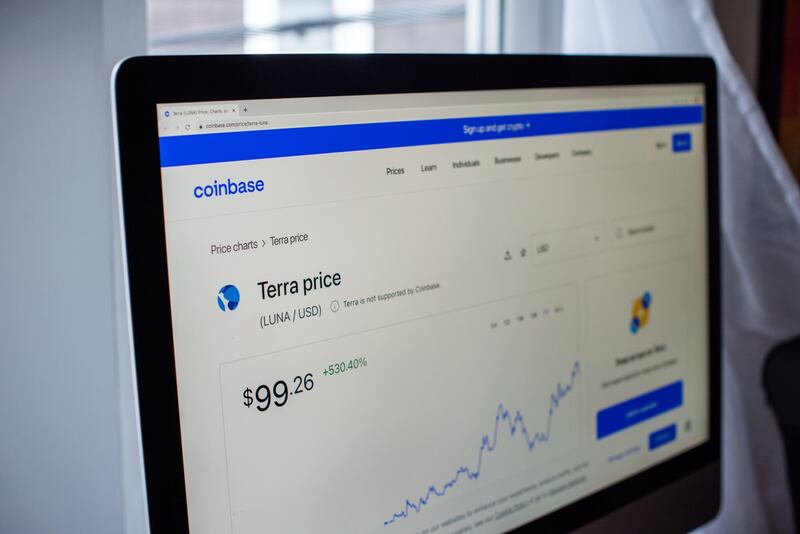Cryptocurrencies steadied after the woes of the TerraUSD stablecoin triggered a flight from many popular digital tokens.
Bitcoin climbed back to about $29,000 on Thursday, from its lowest point since 2020. Tokens such as Avalanche and Solana, which underpin some key decentralised finance protocols, posted double-digit percentage gains.
The TerraUSD stablecoin was still below it $1 intended peg, while affiliated token Luna struggled. Overall, the cryptocurrency sector is nursing heavy losses for the week and sentiment remains fragile.
“UST’s collapse undercuts confidence in all liquidity protocols,” said Aaron Brown, a cryptocurrency investor who writes for Bloomberg Opinion.
“If UST can fail, maybe Aave can too. Sort of like when Bear Stearns failed, it focused people’s attention on whether Lehman would fail.”
The TerraUSD algorithmic stablecoin — also known as UST — has been bouncing between 20 cents and 90 cents and was at about 75 cents as of 10.35am in Singapore.
Backers of the coin are trying to raise about $1.5 billion to shore up the token after it crashed from its dollar peg, according to the founder of a company that was approached about the deal.
“Is the market getting spooked by what is happening with Terra? The answer is yes,” said Craig Johnson, chief market technician at Piper Sandler.
“Money-market funds are important to investors and right now, we are questioning the third-largest money-market fund in crypto land. People did not think we were going to break the buck on that and that has clearly happened.”
Cryptocurrency sentiment was also hurt by elevated US inflation, which points to aggressive interest-rate increases — an unfavourable environment for risk assets.
Marcus Sotiriou, an analyst at UK-based digital-asset broker GlobalBlock, said there was “extreme fear” across the cryptocurrency market.
James Malcolm, head of foreign exchange and crypto research at UBS, said the area around $30,000 had been an “especially sensitive zone” for Bitcoin.
That is where mining economics turn negative, “which could potentially lead to increased coin sales by this key cohort”, Mr Malcolm said.
Meanwhile, Coinbase shares and bonds fell to new lows on Wednesday, signalling investor scepticism about the prospects of the cryptocurrency exchange in a bear market.
The company reported lower-than-expected revenue yesterday, and issued a warning that trading volume and the number of monthly transacting users in the second quarter are expected to be lower than in the first.
Piper Sandler‘s Mr Johnson said that is another concern for cryptocurrency investors right now as “it is the largest exchange here in the United States and they just turned a loss”. He said Terra’s troubles are all “snowballing in crypto land.”
Still, a lot of cryptocurrency investors, cognisant that Bitcoin has gone through a boom-and-bust cycle before only to recoup losses over and over again, are preaching patience.






